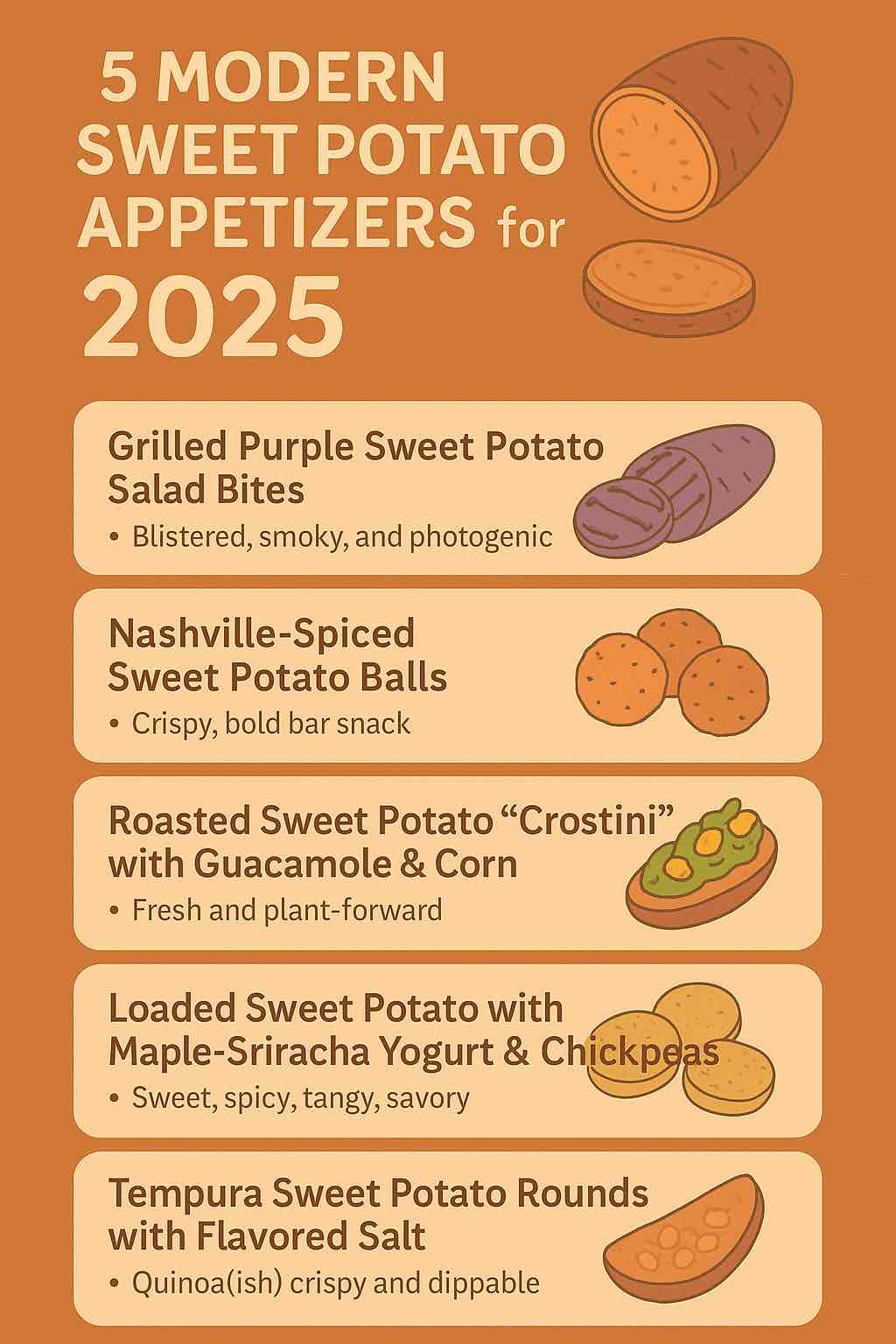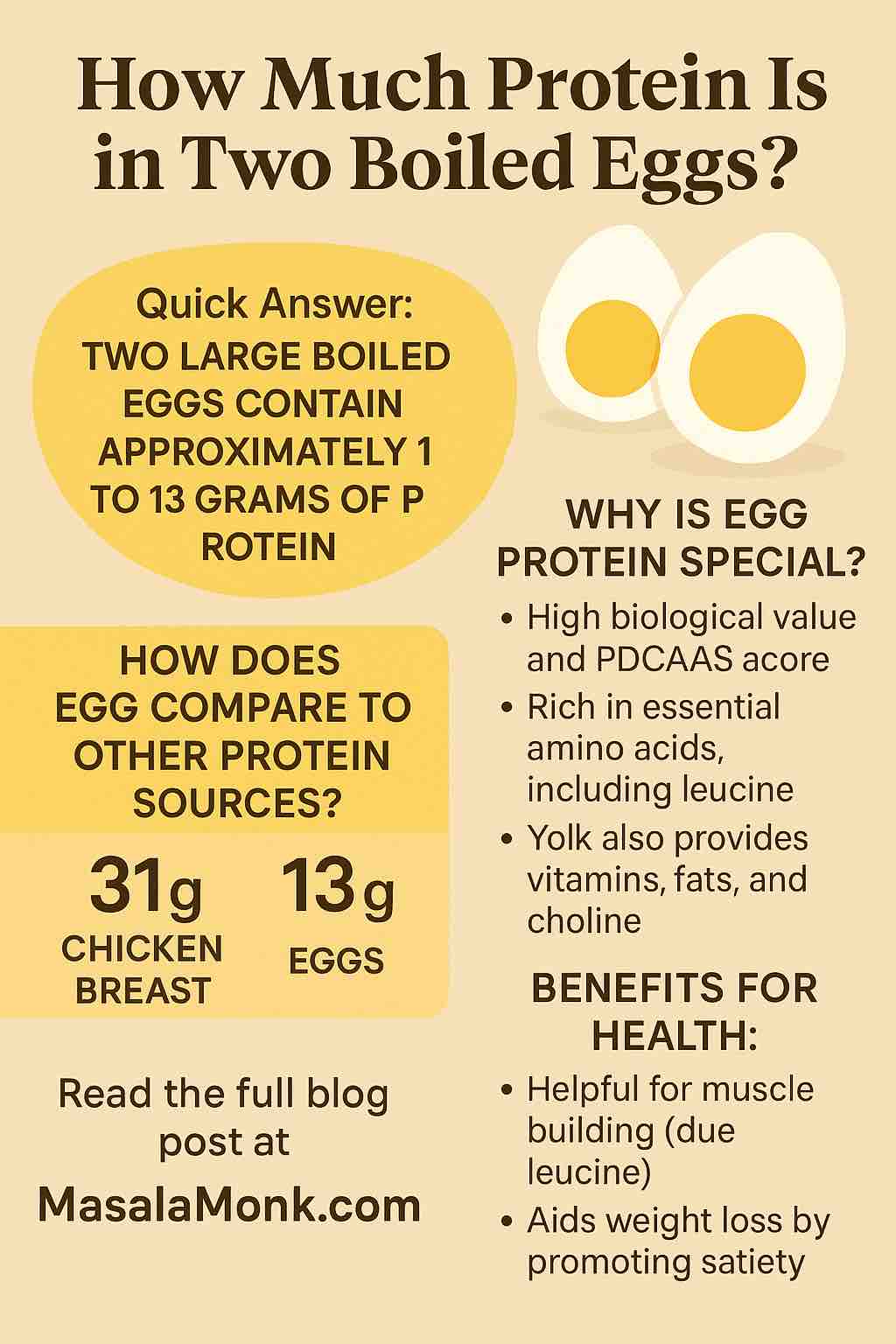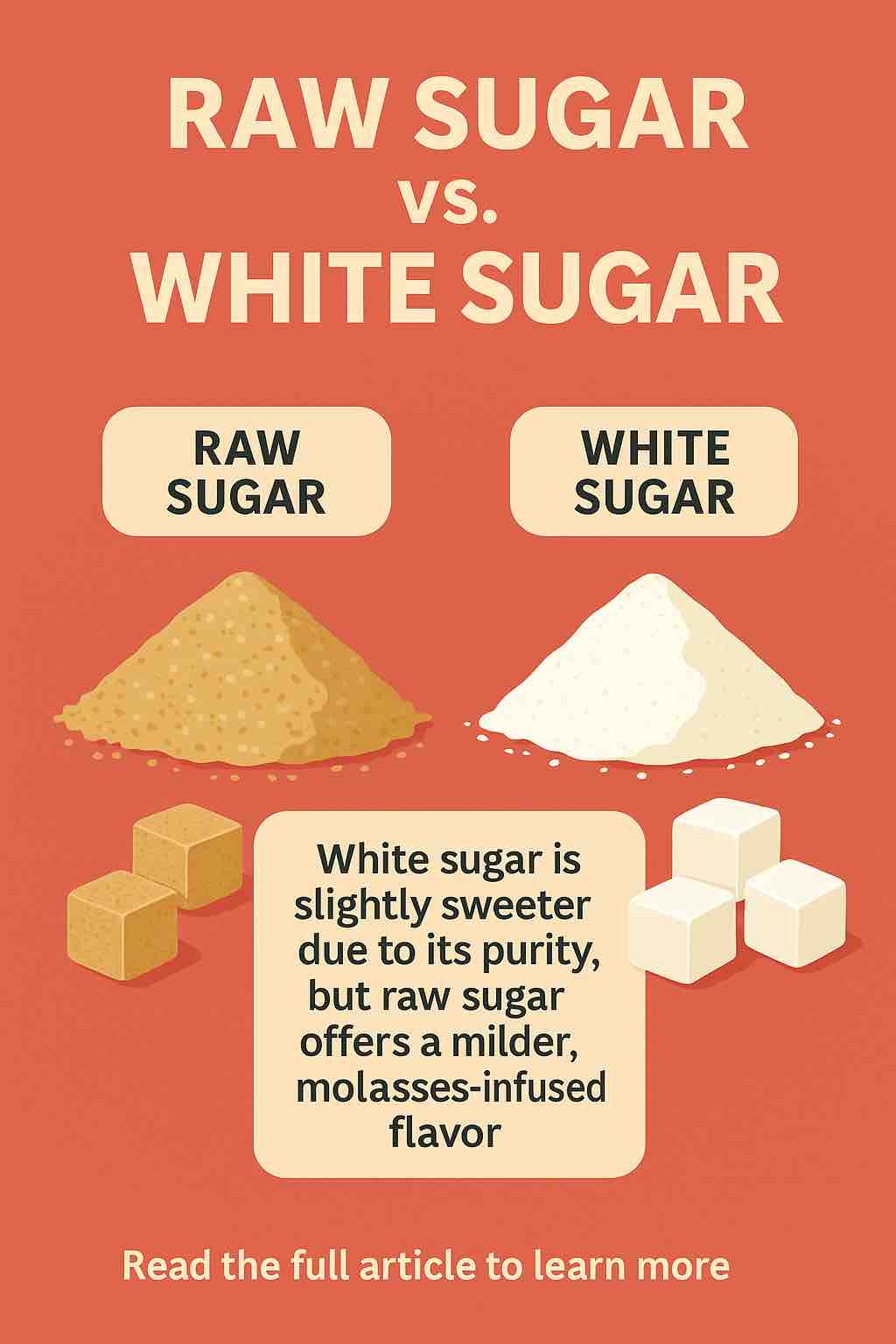
Sweet potatoes have officially moved beyond the Thanksgiving table and into the culinary spotlight as a versatile, healthful, and flavor-packed ingredient. Whether you’re a home chef or running a professional kitchen, the latest trends in sweet potato appetizers are all about global flavors, striking visuals, and creative textures.
In this post, we dive deep into five trending sweet potato appetizers for 2025, blending research from top food publications, chef menus, and recent product innovations. Each idea is presented with a chef’s rationale, practical how-to guidance, and tips for home and pro kitchens alike.
1. Grilled Purple Sweet Potato Salad Bites
Why It’s Trending:
Purple sweet potatoes are a visual knockout and rich in antioxidants. Recently featured by Bon Appétit (July 2025), grilling intensifies their natural sweetness while adding smokiness—a modern update for plant-forward appetizers.
How to Make It Practical:
- Slice purple sweet potatoes into ½-inch rounds.
- Toss with olive oil, salt, and pepper.
- Grill on high heat until blistered and tender (about 4 minutes per side).
- Dress with a creamy sesame-mayo or a lemony vinaigrette.
- Top with scallions, toasted sesame seeds, and microgreens.
Pro Tip:
For parties, skewer grilled rounds and serve with the dressing on the side for dipping. The color and char will stand out on any appetizer tray.
2. Nashville-Spiced Sweet Potato Balls
The Inspiration:
A twist on classic croquettes, these crispy, spice-laden balls are inspired by the hot chicken craze, but made for vegetarians and flexitarians. Recent recipes (Cherry on My Sundae, June 2025) blend sweet potato with smoky paprika, cayenne, and a crunchy coating.
How to Make Them Practical:
- Roast and mash sweet potatoes.
- Mix with breadcrumbs, Nashville-style spices, finely diced green onions, and (optional) shredded cheese or bacon bits.
- Form into balls; dredge in flour, egg, and panko.
- Fry or bake until golden and crisp.
- Serve with a creamy ranch or tangy comeback sauce.
Pro Kitchen Variation:
Pipe spiced sweet potato puree into mini choux pastry shells for an upscale passed hors d’oeuvre.
3. Roasted Sweet Potato “Crostini” with Guacamole & Corn
Why Chefs Love It:
Bread-free “crostini” are trending among gluten-free diners and those seeking lighter fare. Roasted sweet potato rounds are the perfect vehicle for colorful, bold toppings. This concept is popular with food bloggers and professional caterers alike (A Couple Cooks, Jan 2025).
How to Make at Home or Work:
- Slice sweet potatoes into thick rounds (about ½ inch).
- Roast with olive oil, cumin, and smoked paprika at 425°F until caramelized (20–25 minutes).
- Top each round with a dollop of guacamole, roasted corn kernels, diced red onion, and chopped cilantro.
- Finish with lime juice and a sprinkle of cotija cheese.
Chef’s Tip:
Try different toppings, such as whipped feta with pomegranate seeds or spicy black bean mash with pickled jalapeños.
4. Loaded Sweet Potato with Maple-Sriracha Yogurt & Crispy Chickpeas
On the Cutting Edge:
Loaded sweet potatoes are evolving, now being downsized into appetizer “boats” for maximum flavor and visual impact. The latest takes layer sweet, spicy, tangy, and crunchy elements for a full flavor experience (Good Mood Food, April 2025).
How to Make Them Practical:
- Halve small sweet potatoes lengthwise; roast until just soft.
- Scoop out a little center to make a well (save the scooped flesh for another use).
- Fill with maple-sriracha Greek yogurt, crispy roasted chickpeas, crumbled feta, and pickled onions.
- Drizzle with almond salsa verde (blend toasted almonds, parsley, lemon, olive oil, and a pinch of chili).
Meal Prep Friendly:
Both the yogurt sauce and chickpeas can be made days in advance, making this ideal for parties.
5. Tempura Sweet Potato Rounds with Flavored Salt
The Industry Insight:
Pre-cooked, tempura-battered sweet potato slices are gaining traction in restaurant and catering sectors for their crispness and convenience (US Foods Chef’s Line, 2025). This idea translates well to home kitchens using basic tempura batter.
How to Bring to Your Table:
- Cut sweet potato into ½-inch thick rounds.
- Dip in a simple tempura batter (flour, cornstarch, cold seltzer).
- Fry in hot oil until golden and crispy.
- Sprinkle immediately with flavored salt (smoked paprika, garlic powder, or furikake).
- Serve with a dipping sauce—try spicy mayo, ponzu, or garlic aioli.
Entertaining Tip:
Offer a trio of dips and salts, and let guests mix and match.
Expert Tips for Sweet Potato Appetizer Success
- Visual Appeal: Use a mix of purple, orange, and white sweet potatoes for color contrast.
- Batch Prep: Many components (roasted rounds, sauces, toppings) can be made ahead for fast assembly.
- Texture Matters: Combine creamy, crunchy, and chewy elements for memorable bites.
- Global Flavors: Don’t be afraid to borrow from global cuisines—sriracha, gochujang, furikake, and curry powder all pair beautifully with sweet potatoes.
Final Thoughts
From smoky grilled salads to street-food-inspired croquettes, sweet potato appetizers are having a major moment in 2025. They’re healthy, photogenic, endlessly adaptable, and equally at home at a casual party or a fine-dining table. Whether you’re looking for a new plant-based favorite or a show-stopping party snack, these ideas bring the best of today’s trends straight to your kitchen.
Ready to experiment? Which idea will you try first? Let us know in the comments or share your own sweet potato creations!
FAQs
1. Can I use regular potatoes instead of sweet potatoes in these recipes?
Answer:
Yes, you can substitute regular potatoes for sweet potatoes in most appetizer recipes, but you’ll lose the characteristic sweetness and vibrant color. Adjust seasonings to balance flavors accordingly.
2. How do I keep sweet potato rounds from getting soggy when roasting or grilling?
Answer:
Slice rounds evenly (about ½ inch), don’t overcrowd the pan, and roast or grill at high heat (425°F/220°C) to encourage caramelization. Let them cool on a wire rack to preserve crispness.
3. Can I make sweet potato appetizers ahead of time?
Answer:
Yes! Many components (roasted rounds, dips, toppings) can be made a day ahead. Store separately and assemble just before serving for best texture and flavor.
4. What are some gluten-free options for breading or crisping sweet potatoes?
Answer:
Use gluten-free panko, crushed rice crackers, or cornmeal for coating. Tempura batter can be made with rice flour and cornstarch.
5. How do I make sweet potato appetizers vegan?
Answer:
Omit dairy (cheese, yogurt) and use plant-based alternatives like cashew cream, vegan cheese, or dairy-free yogurt. Use aquafaba or flaxseed “egg” for binding in fritters or balls.
6. What’s the best oil for frying sweet potato appetizers?
Answer:
Use oils with a high smoke point like canola, peanut, or avocado oil. For added flavor, try a touch of sesame oil in the batter or as a finishing drizzle.
7. Can I air-fry sweet potato appetizers instead of deep frying?
Answer:
Absolutely! Air frying is a healthier alternative and works well for rounds, wedges, and even “balls.” Toss lightly in oil, arrange in a single layer, and cook at 375°F/190°C, flipping halfway.
8. How do I add more flavor to plain sweet potato appetizers?
Answer:
Experiment with spice blends (cajun, za’atar, curry powder), citrus zest, fresh herbs, or flavored salts. Don’t be afraid to use bold, global-inspired dips.
9. Are these sweet potato appetizers suitable for kids?
Answer:
Yes! They’re naturally sweet and can be made mild by adjusting spices. Offer a range of dips and let kids assemble their own bites for fun.
10. How should I store leftovers, and can I reheat sweet potato appetizers?
Answer:
Store leftovers in an airtight container in the fridge for up to 3 days. Reheat in a hot oven or air fryer to restore crispness; avoid microwaving as it makes them soggy.













